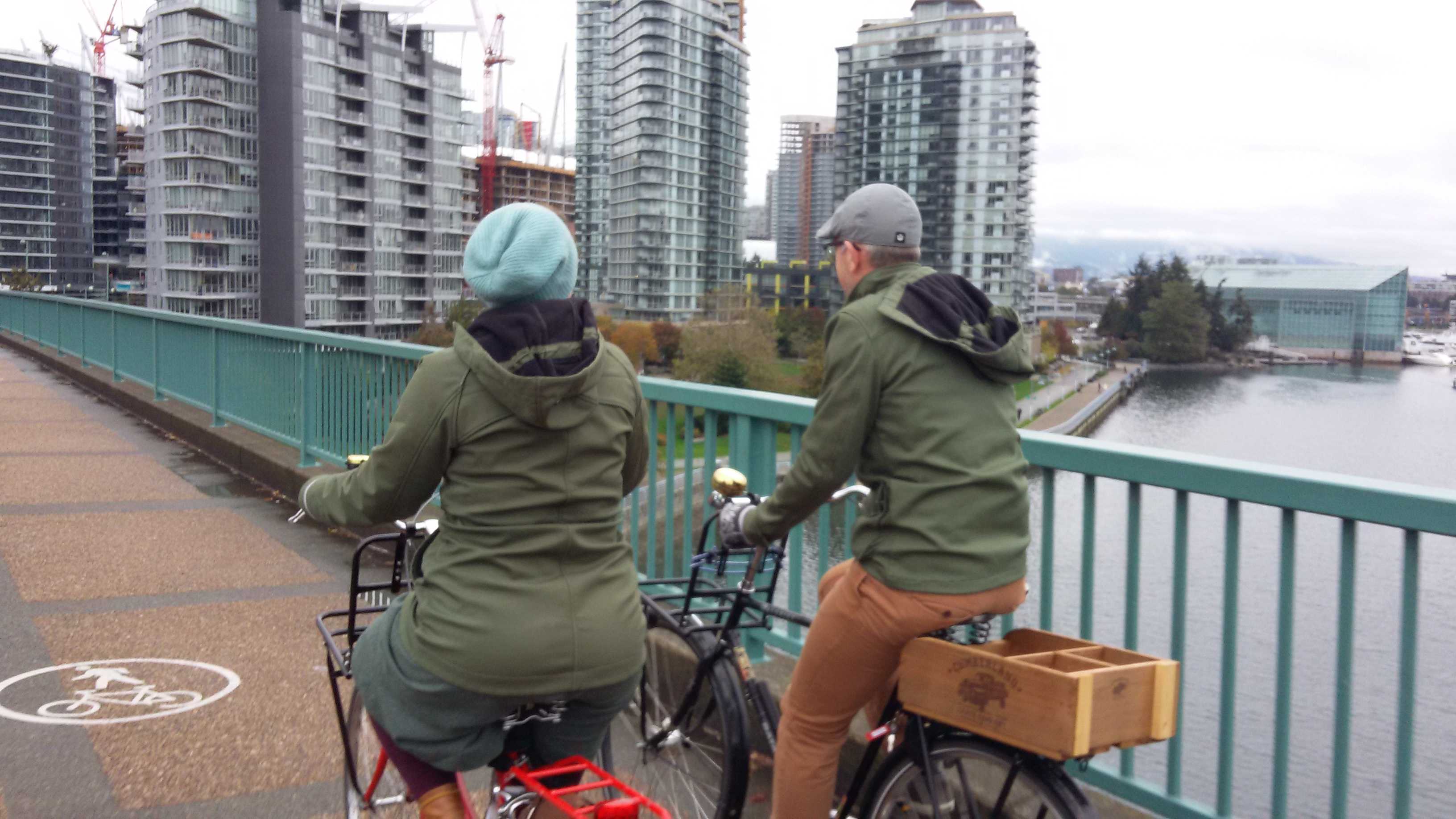Today I changed tack a little in my investigations and, instead of talking to people in charge of designing facilities, I talked to a couple who use them. I didn't just find some randoms, though - I met with Chris and Melissa Bruntlett, who I think must be Vancouver's most famous people on bikes. I first came across them speaking at the 2014 New Zealand walking and cycling conference. I found their story inspiring and challenging, and was pleased for the opportunity to meet them in person in their home cycling-ground.
Long-story-short (better to hear it from them on their website), the Bruntletts sold their car in 2010 and, with their two kids, have since relied on walking, cycling, public transport and occasionally hiring a car. This experience inspired them to begin Modacity, a "communications and marketing firm focused on inspiring healthier, happier, simpler forms of urban mobility" which quickly gained momentum and is now a full-time occupation for the pair.
I tried not to ask all the questions they must get all the time... but now realise that's impossible given the number of people they talk to about cycling in both professional and personal capacities. We covered a wide range of topics, from e-bikes to social equity issues with network planning, from bike helmets to blueberry bushes being used as an excuse to hold up construction of a bike corridor.

In terms of protected bike lanes, the Bruntletts support them as a useful tool to enable a greater range of people to feel comfortable cycling in a busy traffic environment. They also mentioned a couple of points in-line with what the designers told me yesterday - that providing cycling facilities can improve quality for walking as well, and that having two-way facilities can make transitions at intersections really confusing. From the end-user's perspective, they believe it's best to implement a network all at once, rather than with one component at a time - having just participated in the Pro-Walk Pro-Bike conference, they're buzzing about the experience at Calgary, where a network of temporary facilities (think paint, plastic posts and planter boxes) was implemented (note to self: find out more about this!).
Having spent so much time recently thinking about how to implement protected bike lanes, it has been thoroughly refreshing to talk to Chris and Melissa and re-centre on why we're doing this - to promote cycling as a normal activity, for regular people making everyday trips.

